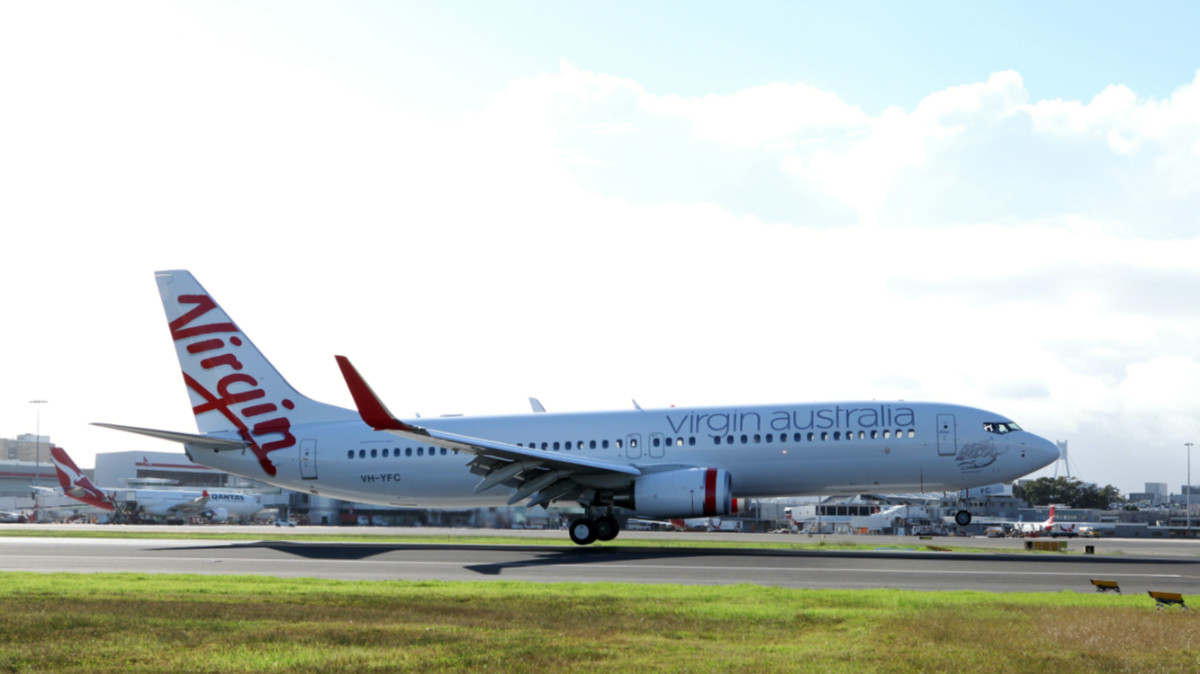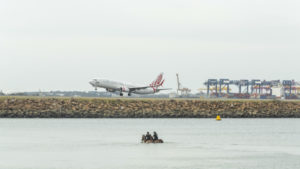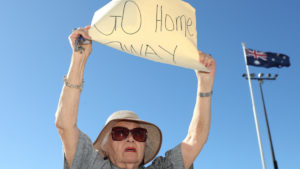Virgin Australia is set to take to the skies again, but will it stay on the ASX?

Virgin Australia (ASX:VAH) will keep some of its 737 aircraft but phasing out all other types (Picture: Getty)
Virgin Australia (ASX:VAH) today revealed its turnaround plan which involves 3,000 job cuts and being an all Boeing 737 airline for now.
The airline went into voluntary administration in April, saddled with debt and the rapid evaporation of travel demand thanks to COVID-19.
It has since been bought by US private equity firm Bain Capital and hopes to emerge on the other side of the crisis as a stronger airline.
Dropping the low-cost brand for now
Virgin Australia stressed it would be “the best value carrier in the market” rather than a low-cost one. The airline will continue to operate airport lounges and business class.
But it will become an all Boeing 737 mainline fleet for the time being removing all other aircraft.
Virgin Australia anticipates eventually recommencing long-haul international operations to Los Angeles and Tokyo, but said this would only happen “when sufficient demand returns”.
The company previously hinted it would be with new Boeing 787 aircraft. Its current 777 and A330 aircraft, which until March served long-haul operations, will be phased out.
Virgin Australia will also be scrapping the ultra-low cost Tigerair brand, but will retain Tigerair’s Air Operator Certificate to enable it to reinstate the service when conditions are better.
Travel credits & Velocity points safe
In good news for Virgin Australia’s passengers, those with travel credits or Velocity points will see their tickets honoured.
Customers with travel credits and Velocity points now have until July 31, 2022 to make bookings and can travel as late as June, 30 2023.
Challenging market leads to job cuts
Virgin Australia’s turnaround plan involves shedding 3,000 jobs.
But the company said 6,000 jobs were secure and another 2,000 may again be filled in the future.
CEO Paul Scurrah said Bain’s investment would ensure Virgin Australia would be in a stronger position to continue its two-decade legacy.
“In a country as big as Australia, strong competitive airlines are critical in helping restore the economy, which is why in the face of the worst crisis our industry has ever seen, a well-capitalised Virgin Australia Group with a solid and sustainable future is a great outcome for Australians and the nation’s economy,” he said.
However, Scurrah noted demand, even for domestic travel, could take at least three years to return to pre-COVID levels and even then the industry would be different.
“Successful airlines will be influenced by demand looking very different than the way they did previously, requiring long-term capital, a lower cost base and be more focused on providing exceptional experiences through a combination of great people and world class technology,” he said.
“Working with Bain Capital, we will accelerate our plan to deliver a strong future in a challenging domestic and global aviation market.
“We believe over time we can set the foundations to grow Virgin Australia again and re-employ many of the highly skilled Virgin Australia team.”
Will Virgin Australia trade on the ASX again?
Since news of Bain’s acquisition of the airline broke, it has appeared all but certain Virgin Australia won’t trade again.
But a firm decision hasn’t been made according to a spokesperson for the company.
“The decision to remain listed on the Australian Securities Exchange (ASX) is for Bain Capital and will be subject to the outcome of the second creditors’ meeting,” the spokesperson told Stockhead.
The Australian Financial Review has reported this will not happen until at least September.
Shares were suspended in early April as the company assessed its options. In the prior quarter it fell over 40 per cent.
Virgin Australia (ASX:VAH) share price chart
Related Topics
UNLOCK INSIGHTS
Discover the untold stories of emerging ASX stocks.
Daily news and expert analysis, it's free to subscribe.
By proceeding, you confirm you understand that we handle personal information in accordance with our Privacy Policy.








